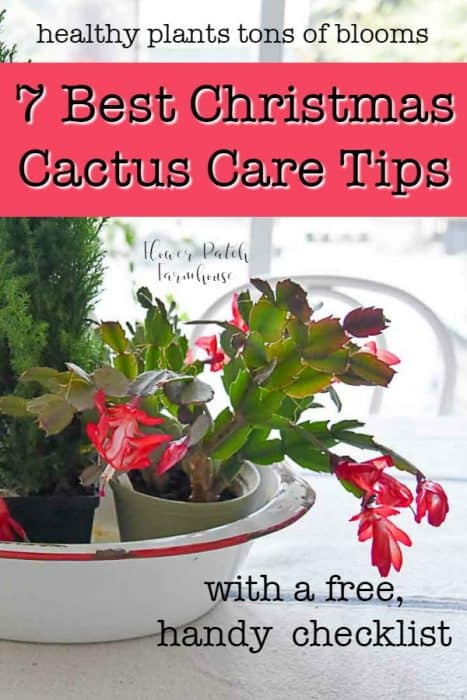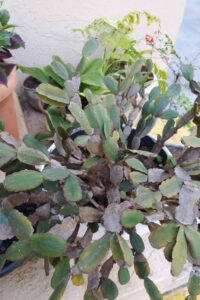Christmas cactus (Schlumbergera) is a popular houseplant known for its vibrant blooms during the winter months. Unlike many other cacti, which thrive in arid conditions, Christmas cactus prefers a more humid environment. Providing the right nourishment is essential for its thriving health and spectacular flowers. In this article, we will explore the best food for Christmas cactus, delving into the intricacies of proper fertilization and care.
Understanding the Nutritional Needs of Christmas Cactus
Before selecting the optimal food for your Christmas cactus, it’s crucial to comprehend its unique nutritional requirements. Unlike traditional desert cacti, Christmas cactus grows in the trees of Brazilian rainforests, where it receives filtered light and nutrients from decomposing organic material. To replicate this environment, you must provide a balance of macronutrients and micronutrients that will promote robust growth and flowering.
The primary macronutrients include nitrogen (N), phosphorus (P), and potassium (K). Nitrogen is vital for promoting lush, green growth, while phosphorus supports root development and enhances flowering. Potassium aids in overall plant health and resilience. A fertilizer with an N-P-K ratio of 3-1-2 is often deemed ideal, facilitating a balanced nutrient uptake.
The Role of Fertilization in Health and Blooming
Fertilization plays a pivotal role in the overall health of your Christmas cactus. During the growing season, which typically spans from spring to early autumn, this plant benefits significantly from regular feeding. During this period, you should fertilize every two weeks with a balanced, water-soluble fertilizer diluted to half-strength. This dilution prevents over-fertilization, which can be detrimental.
As the plant approaches the dormant period in late fall and winter, decrease the frequency of fertilization. While the Christmas cactus requires some nutrients during dormancy to maintain health, fertilizing too often can interfere with its natural cycle and reduce blooming potential. A light feeding once a month is adequate during the dormant months.
Types of Fertilizers Suitable for Christmas Cactus
When selecting a fertilizer for your Christmas cactus, consider the following options:
Liquid Fertilizers: These are convenient and easy to apply. Liquid fertilizers, preferably designed for flowering houseplants, can be absorbed more rapidly by the plant. Look for formulations high in phosphorus to encourage vibrant blooms. Brands that specify use for cacti and succulents may also achieve excellent results.
Slow-Release Fertilizers: These granular fertilizers can be mixed into the potting medium. They provide a steady supply of nutrients over an extended period, reducing the frequency of application. However, ensure you monitor moisture levels, as slow-release fertilizers can lead to salt buildup if not watered adequately.
Organic Options: For those seeking a more natural approach, organic fertilizers derived from compost, worm castings, or seaweed extracts can be incredibly beneficial. They not only release nutrients slowly but also improve soil structure and microbiota, promoting overall plant health. These options align well with the Christmas cactus’s natural growing conditions.
Signs of Nutrient Deficiency and Over-Fertilization
While adequate fertilization is crucial, too much of a good thing can lead to problems. Recognizing signs of nutrient deficiency or over-fertilization is vital for maintaining your Christmas cactus’s health.
Nutrient Deficiency: Yellowing leaves may indicate a nitrogen deficiency, while dark foliage with few or no blooms could signal a lack of phosphorus. Stunted growth and weak stems might suggest an insufficient supply of potassium. Adjusting your fertilizer regimen can rectify these issues.
Over-Fertilization: Symptoms such as brown leaf tips or edges may indicate salt buildup from excessive fertilizer. If you suspect over-fertilization, it may be beneficial to flush the pot by thoroughly watering until drains from the bottom. This action will help leach away excess salts and restore balance.
Conclusion: Balanced Care Equals Flourishing Blooms
In summary, the best food for Christmas cactus encompasses a tailored approach to fertilization, considering both macronutrient and micronutrient requirements. With the right fertilizer and consistent care, your Christmas cactus can flourish and reward you with cascading blooms in the holiday season. Balancing feeding frequency with plant health and observing the telltale signs of nutrient balance will not only enhance its beauty but can lead to an enduring relationship with this captivating houseplant.





Leave a Comment